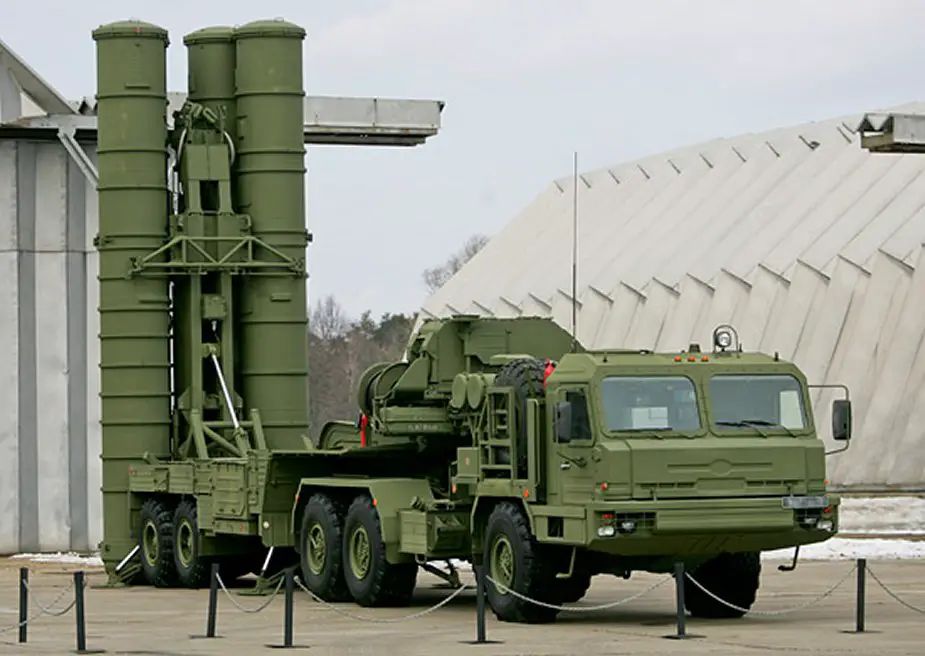To avoid sanctions imposed by President Trump’s administration, India will have to reduce oil imports from Iran and cancel a planned $6 billion purchase of S-400 anti-aircraft missiles from Russia, ThePrint reports. However, India is expected to inform the US during a top-level meeting this week that it will go ahead with a deal to purchase the Russian S-400 air defense system despite the threat of American sanctions, Indian media reports.

S-400 Triumf, dubbed SA-21 Growler by NATO (Picture source: Russian MoD)
US Defense Secretary Jim Mattis and Secretary of State Michael Pompeo travel to New Delhi this week in an effort to seal a new defense cooperation agreement with their Indian counterparts despite tensions over threatened American sanctions. The sale of the advanced S-400 anti-aircraft system is of particular concern in Washington, which has repeatedly advised countries interested in buying the weapon system, including Turkey and India, against doing so.
Hanging over the meeting, planned for September 6, is the prospect that the US will impose economic sanctions on Prime Minister Narendra Modi’s government unless it significantly reduces purchases of oil from Iran and cancels a planned $6 billion purchase of S-400 anti-aircraft missiles from Russia. Indian officials have said the Russian arms deal would go ahead as planned.
The first US-India 2+2 Ministerial Dialogue is about expanding a strategic partnership rather than closing individual arms deals, according to a Defense Department official. Transfers of advanced defense technology would be boosted if the two sides are able to complete work on a proposed Communications Interoperability and Security Memorandum of Agreement.
Sales of US arms, associated parts and logistics support to India have increased to an estimated $15 billion this year from zero in 2008 and could rise by an additional $3 billion by 2019, said the official, who briefed reporters on condition of anonymity. The prospects include a potential deal to build advanced F-16 fighter jets from Lockheed Martin Corp. in India.
Reflecting the importance of India as a strategic ally, Mattis this year renamed the US Pacific Command as the Indo-Pacific Command. In hopes that India can be recruited to help the US counter China’s growing military and economic power, the Trump administration’s National Defense Strategy published this year calls for bolstering “partnerships in the Indo-Pacific to a networked security architecture capable of deterring aggression, maintaining stability, and ensuring free access to common domains.”
But the threat of sanctions clouds the prospects for US-India cooperation. The US plans to reimpose sanctions on purchases of Iranian oil in November, after President Donald Trump quit the 2015 multinational nuclear deal with Iran. Meanwhile, a 2017 law imposed by Congress requires the president to penalize countries that conduct a “significant transaction” with Russia’s defense sector.
The US won’t issue blanket waivers for arms deals with Russia, and any exemptions from sanctions would require a significant reduction in reliance on Russian arms, a second US official said. The S-400 is the same system Turkey (however a NATO member) plans to buy, a prospect that’s roiled Ankara’s relations with the US and drawn condemnation in Congress.
India’s foreign ministry declined to comment on any prospective deals during the US dialogue. In mid-July, Defense Minister Nirmala Sitharaman said that India and Russia are close to concluding the S-400 deal and that India would go forward with the deal, adding that the new US law isn’t binding on India.
Indian officials previously said that they were willing to cut oil Iranian oil imports up to 50 percent in order to secure a waiver to continue shipments. “These are both sensitive,” said Hemant Krishan Singh, a former Indian ambassador to Japan and current director general of the Delhi Policy Group think tank. “It will be the test of our nascent Indo-Pacific partnership to be able to walk this fine line together, and to find adjustments that take into consideration American interests and Indian interests.”
US officials didn’t say whether Mattis and Pompeo will offer India options to buy US systems instead of the S-400. “We would still have very significant concerns if India pursued major new platforms and systems” from Russia,” Randall Schriver, the Pentagon’s assistant secretary of defense for Asian and Pacific Security Affairs, said at the Carnegie Endowment for International Peace in Washington last week.
Nonetheless, “the US looks to discuss broadening” its existing “Major Defense Partnership” with India “and reach agreements on a series of proposals to enhance bilateral defense cooperation,” Schriver said last week in a statement. Last month, India approved two key military purchases from the US, including a $1 billion surface-to-air missile system developed in part by Raytheon and a $2-billion government-to government deal for 24 naval helicopters from Lockheed.














